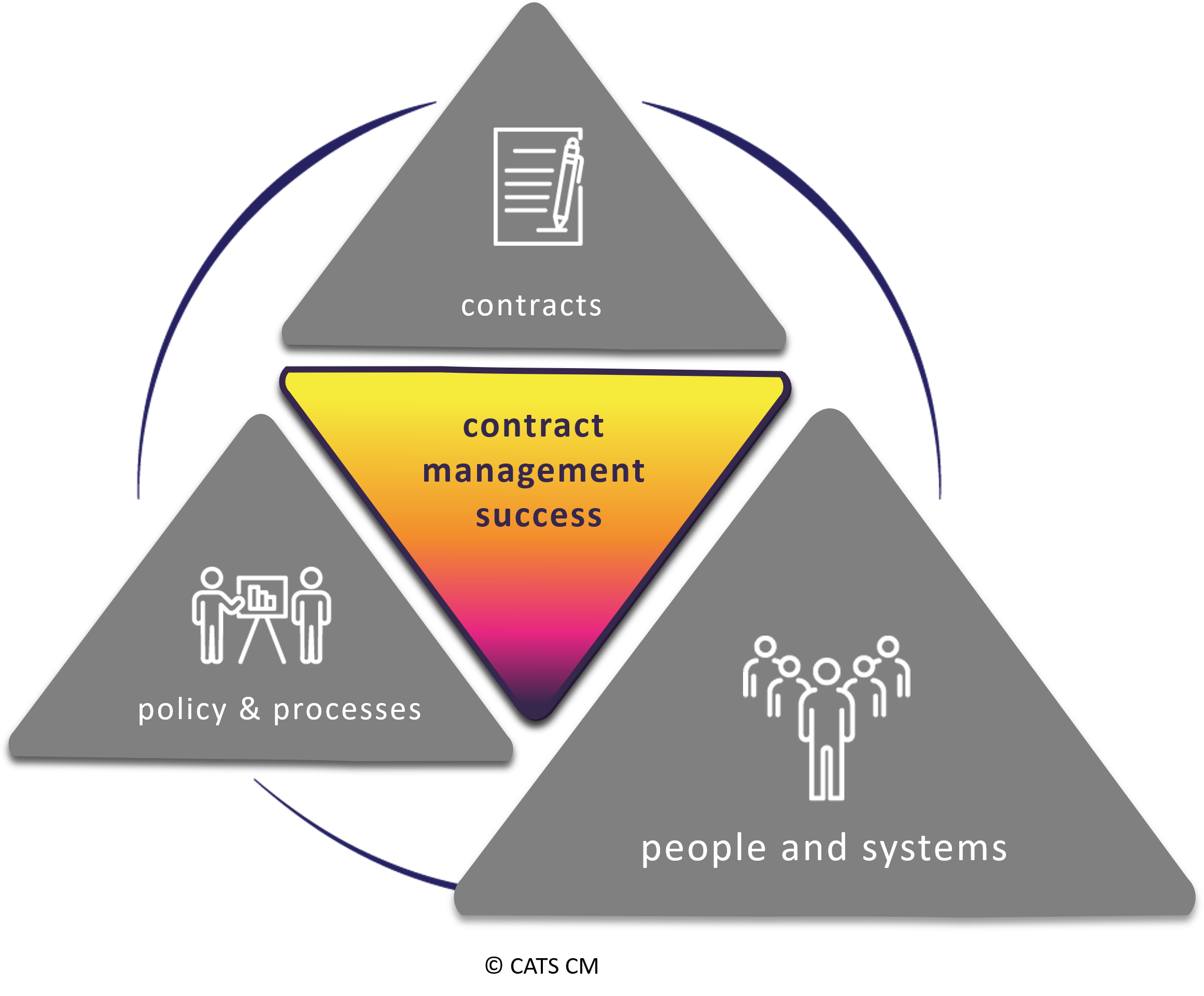After having introduced the three essential factors for successful contract management, my previous blog took a closer look at the first factor: policy and processes. Of course, successful contract management will never be achieved without the right people and systems. However, it is important to have sufficient staff with the necessary competencies and systems that actually support the processes. In this blog, I will give a bit more detail about these aspects.

Sufficient and competent staff
The number of contract managers an organization may need depends on how the contract management process is structured, the number of contracts the organization enters into, and the nature of these contracts.
The competencies that a contract manager needs to have (or should develop) are linked to how the contract management policy defines the role of contract manager. This definition is based on what the organization wants to achieve with contract management, its implementation in the contract management policy, and the organization-specific requirements for the competencies as they relate to the approach. When this role is part of the function descriptions within the organization, it will form a basis for assessing and evaluating the contract managers’ performance and developing their competencies accordingly.
The requirements of professional contract management, and the organizational requirements, determine which competencies a contract manager needs to fulfill his or her role or function. These competencies should be included in the function profile of the contract manager. Apart from that, they must be discussed and tested during performance reviews and appraisals. The level at which the contract manager is able to demonstrate these competencies will also be a deciding factor for the scope and complexity of the contracts that he or she will be able to manage.
The competencies
I have listed some examples of competencies that apply to the majority of contract managers:
- Attention to detail: the ability to handle detailed information consistently and effectively.
- Conflict handling: the ability to deal with conflicting interests diplomatically and helping to resolve them.
- Client-orientation: identifying the client’s wishes and needs, and to act accordingly, always taking the organization’s costs and benefits into account.
- Negotiation skills: getting optimal results during discussions with conflicting interests, both substantially and for maintaining a good relationship.
- Persuasiveness: the ability to win over others to viewpoints and ideas, and creating consensus.
- Planning and organizational skills: establishing goals and priorities and communicating the actions, time and resources required to achieve these goals.
- Result-oriented: taking concrete and targeted actions to achieve or exceed objectives.
This is a list of just some examples, which can, of course, be complemented or adjusted. When every organization makes its own judicious choices regarding the required competencies for the role or function of contract manager, then this will increase the success of contract management.
Process-aligned systems
When implementing a process, the organization determines whether or not a new system would be desirable. If so, the organization puts together a list of requirements for the new system, based on the structure of the process, and then selects the most suitable application. When the organization chooses not to invest in a new system, the process must be modified to fit the existing system. Important procedural steps or administrative measures that the existing system can’t perform, but which are essential, must then be guaranteed in another way.
It may sound odd, but an existing software system for contract administration can be a pitfall when implementing contract management. These systems generally only register the (basic) contract details and, based on that, they send out triggers to persons who were given a role within the execution of the contract. This effectively makes it a contract administration system. Increasingly, these systems are also capable of registering the information that develops during the execution phase of the contract and not just the details that stemmed from the finalization of the contract. That makes these systems suitable to support the contract management process during the execution phase, but contract management carried out by people is nearly always required as well.
Summary
An organization with a professional contract management policy and a contract management process optimizes its return by deploying sufficient and competent staff, as well as process-aligned systems, during the process implementation. The requirements for the people and systems must support the policy and the process. The CATS CM® methodology offers organizations clear tools and guidelines for defining the contract manager’s competencies and determining the requirements for the contract management systems.
This is the fifth blog of the series ‘Contract Management with CATS CM® in a nutshell’, in which we guide you through an overview of our vision and methodology. Do you have any questions for Linda Tonkes and Gert-Jan Vlasveld, the authors of the book Contract Management with CATS CM® version 4? Then please send an email to questions@cats-cm.com!